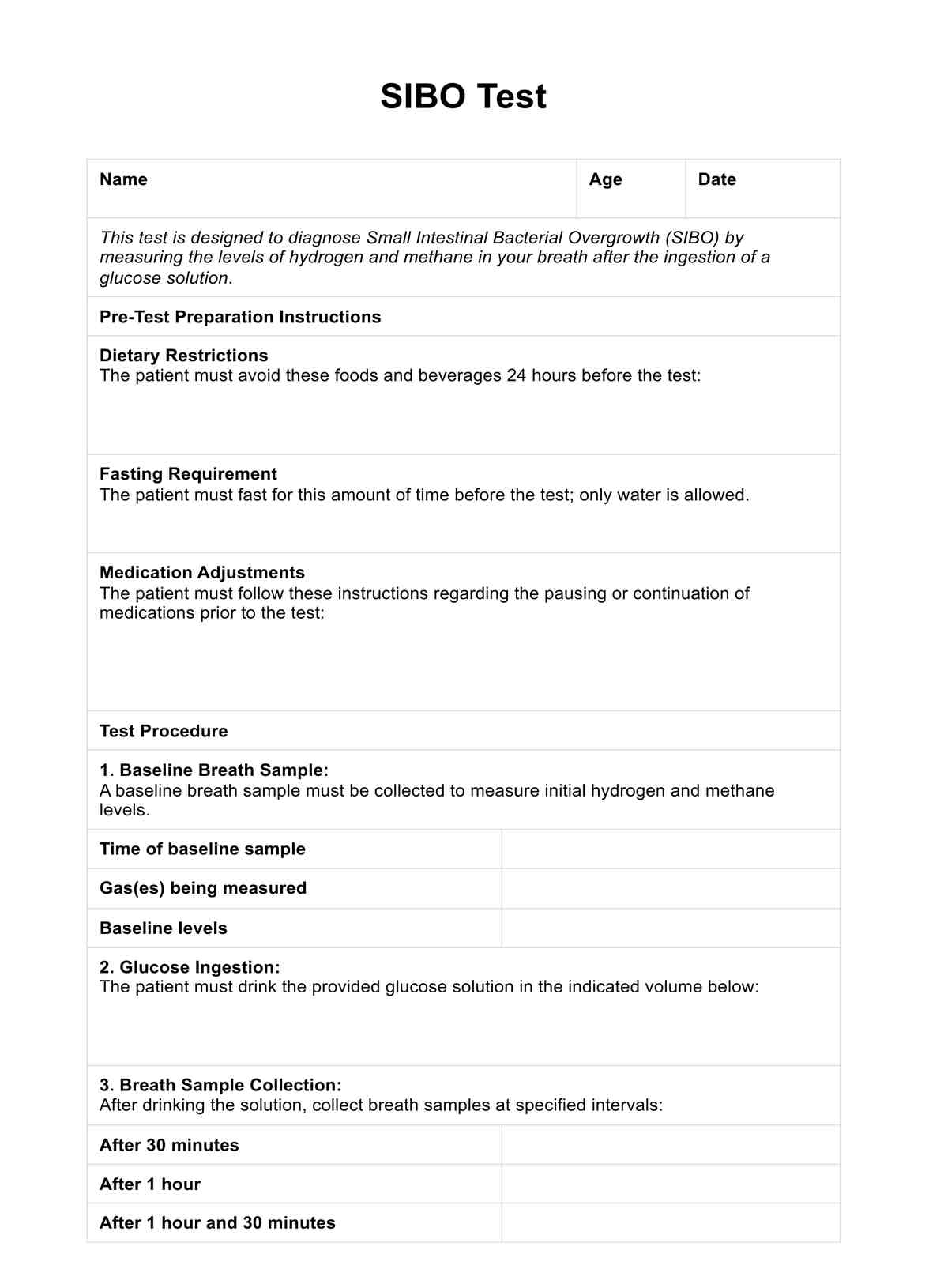Doctors commonly use breath testing, such as the glucose breath test or methane-based breath testing, to diagnose SIBO. These tests measure levels of hydrogen, methane, or hydrogen sulfide gas in the breath after the patient consumes a specific sugar solution.

SIBO Test
Discover how to diagnose and manage Small Intestinal Bacterial Overgrowth with our comprehensive SIBO Test Template, designed for healthcare professionals.
SIBO Test Template
Commonly asked questions
Early signs of SIBO include abdominal pain or discomfort, bloating, gas, diarrhea, and constipation. Some individuals may also experience weight loss and malnutrition.
While professional diagnosis is recommended, a home version of the SIBO breath test is available. It involves drinking a glucose solution and measuring breath gas levels over a few hours, similar to clinical breath tests. Being able to do SIBO breath tests at home allows for easier management of recurring cases.
EHR and practice management software
Get started for free
*No credit card required
Free
$0/usd
Unlimited clients
Telehealth
1GB of storage
Client portal text
Automated billing and online payments











